Is it safe to wear compression socks to bed? As a brand owner or product manager in the hosiery space, this is likely a question you’ve encountered from your own customers. They feel the incredible benefits of support and reduced fatigue during the day and naturally wonder if they can extend that comfort into the night. Your challenge is to provide an answer that is not only accurate and safe but also reinforces your brand’s authority and expertise. You need to be the trusted source of information.
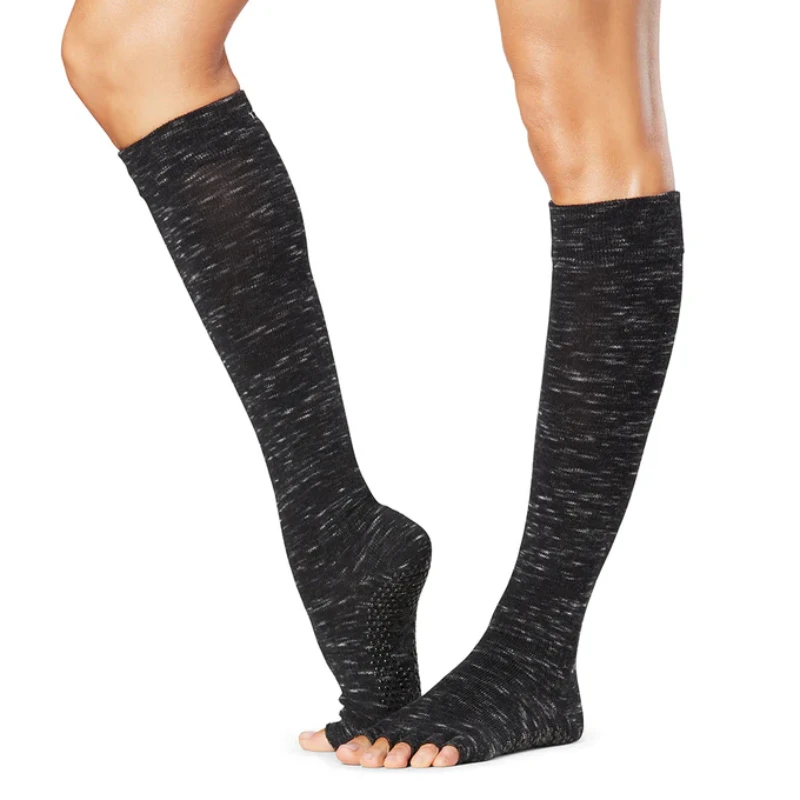
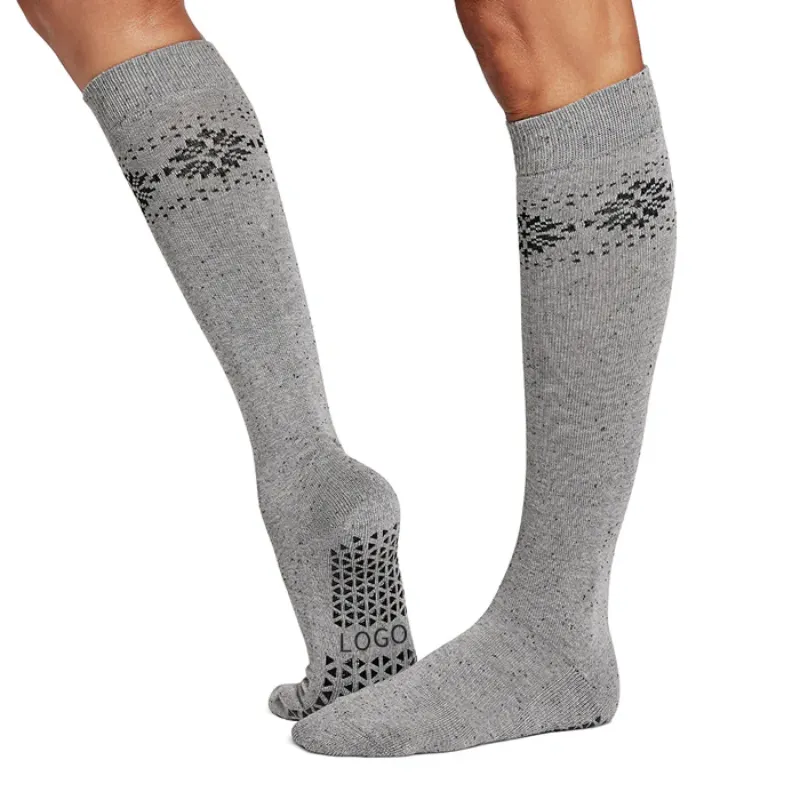
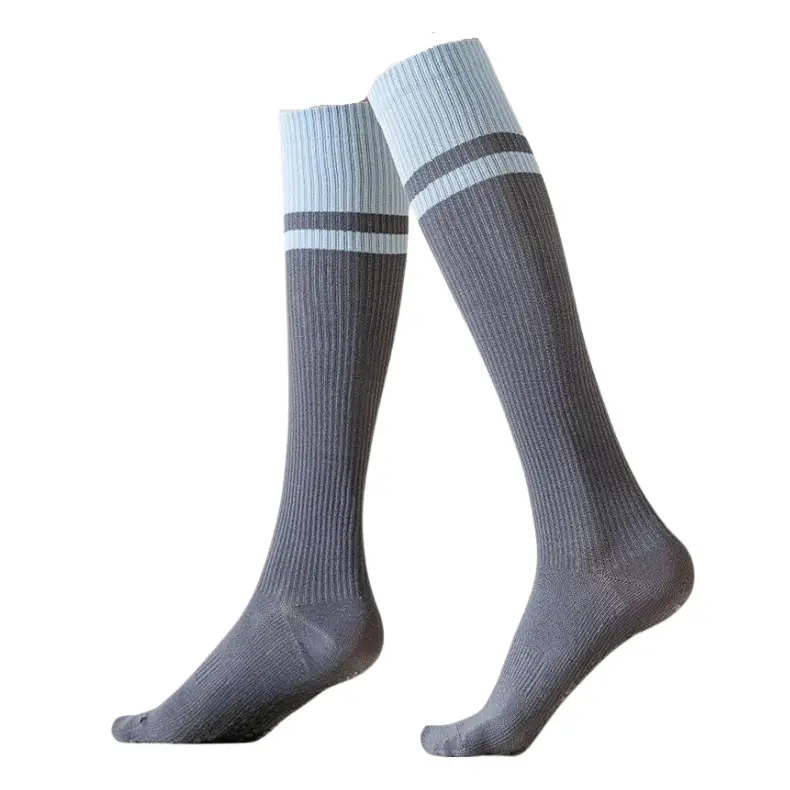
You’ve come to the right place. This is a question we at Max Hosiery live and breathe. As a dedicated manufacturer with years of experience, we understand the science behind compression inside and out. This guide is specifically designed for you—the business behind the brand—to give you a definitive answer on nighttime wear, explain the critical “why,” and equip you to educate your customers effectively.
Why Are People Asking About Wearing Compression Socks to Bed?
Before we can tackle the nighttime issue, we have to understand the daytime magic. The entire reason this question exists is that compression socks are incredibly effective when we are awake and moving. Your customers are experiencing real, tangible benefits, and that success is what drives their curiosity about overnight use. The core principle is graduated compression, a technology that applies precise pressure to the leg—tightest at the ankle and gradually decreasing as it moves up. This isn’t just a tight sock; it’s a finely tuned medical concept designed to work against a constant force: gravity.
Here’s the breakdown. During the day, our bodies are vertical. This means our circulatory system has to work hard to pump blood from our feet all the way back up to the heart. For many people, this system can become inefficient, leading to discomfort and other issues.
This is where your products become heroes for:
- Active Professionals: Think of nurses, teachers, and retail staff who are on their feet for 8-10 hours a day. Gravity causes blood to pool in their lower legs, resulting in swelling and that all-too-familiar feeling of heavy, tired legs. Compression socks provide the external support needed to help veins push blood upward more efficiently.
- Athletes: For runners, cyclists, and gym-goers, compression is a game-changer for both performance and recovery. It can enhance blood flow during activity and, more importantly, help reduce muscle soreness and clear metabolic waste after a workout.
- Travelers: On long flights or car rides, prolonged sitting in a cramped position can seriously slow circulation, leading to swollen ankles and increasing the risk of Deep Vein Thrombosis (DVT). Compression socks are a traveler’s number one defense.
- Pregnant Women: The physical changes during pregnancy, including increased blood volume and pressure on the veins, make swelling and varicose veins common. Compression socks offer vital relief and support.
The bottom line is this: During the day, compression socks are a powerful tool against gravity-induced circulatory issues. Their effectiveness is undeniable, which logically leads your customers to the next question.
| User Group | Daily Compression Sock Benefit |
|---|---|
| Active Professionals | Reduces leg fatigue, swelling, and heaviness during long hours of standing |
| Athletes | Supports circulation during activity and speeds up recovery after workouts |
| Travelers | Helps prevent swelling and lowers DVT risk during long flights or road trips |
| Pregnant Women | Relieves vein pressure, reduces swelling, and supports better circulation |
How Does Circulation Fundamentally Change When You Lie Down?
To truly understand why nighttime compression is different, we must shift our perspective from vertical to horizontal. The moment a person lies down in bed, the entire dynamic of their circulatory system changes. Explaining this simple piece of physiology is the most powerful way to educate your customers and solidify your brand’s expertise. When you’re standing or sitting, your heart has the difficult job of pumping blood against gravity from your feet. The pressure inside your lower leg veins is high.
But everything changes when you’re horizontal. When you lie flat, your legs, heart, and head are all on the same level plane. Gravity is no longer a significant obstacle for your venous system. The pressure in the veins of your legs drops dramatically because blood no longer has to travel “uphill” to get back to the heart. It can flow back easily and naturally, without needing the extra assistance from external compression. Your body’s circulatory system is already in its most efficient and relaxed state for venous return.
What does this mean? It means the primary job of a daytime compression sock—to counteract the effects of gravity—is rendered completely obsolete when a person is sleeping. The tool is no longer needed because the problem it was designed to solve has temporarily vanished. This isn’t a matter of opinion, but a fundamental principle of human physiology. Providing this clear, logical explanation is far more effective than a simple “don’t do it.”
What Are the Main Risks of Wearing Compression Socks Overnight?
Given that your circulatory system functions efficiently on its own when you’re lying down, adding unnecessary external pressure overnight is not only pointless but can also be risky. For the vast majority of healthy individuals, wearing standard daytime compression socks to bed is not advised. As a responsible brand, clearly communicating these potential risks is essential for customer safety and trust.
The potential issues stem from one central problem: restricting blood flow when it doesn’t need help.
The Tourniquet Effect
A compression sock that fits perfectly while you’re moving around during the day can become a hazard at night. If the sock’s top band is too tight, or if the sock rolls down and bunches up behind the knee or at the ankle, it can act like a tourniquet. This constriction can impede not just venous return but also arterial flow—the critical supply of oxygenated blood to your feet. This is especially dangerous for anyone with an undiagnosed circulatory condition.
Skin and Nerve Issues
Wearing a tight garment for eight straight hours on a stationary limb can lead to a host of skin problems. The constant pressure can cause chafing, irritation, rashes, or even skin breakdown, particularly if the material is not breathable. Furthermore, sustained pressure on certain areas, like around the fibular nerve on the outside of the knee, can lead to numbness, tingling, or even temporary nerve palsy. The bottom line is this: your customers are seeking comfort, and waking up with red, irritated skin or numb feet is the exact opposite of that goal.
Can Wearing Compression Socks to Bed Actually Cut Off Circulation?
This is the ultimate fear your customers have, and it’s a valid concern that deserves a direct answer. While it’s highly unlikely that a properly-sized, over-the-counter compression sock would completely cut off all circulation in a healthy person, it can certainly compromise or reduce it to a dangerous degree, especially in certain individuals. The risk is not zero, and that’s the key message.
Think about it. The term “cutting off circulation” usually refers to the arterial flow of oxygen-rich blood into the limb. Compression socks are designed to support venous flow (blood out of the limb). However, if the sock is too tight, improperly fitted, or bunches up, it can exert enough pressure to squeeze the surface-level arteries as well.
This becomes a significant danger for people with underlying conditions they may not even be aware of, such as:
- Peripheral Artery Disease (PAD): In individuals with PAD, the arteries leading to the legs are already narrowed. Adding external compression can further restrict this already-compromised blood flow, leading to pain, numbness, and potentially worsening the condition.
- Peripheral Neuropathy: People with neuropathy (often related to diabetes) have reduced sensation in their feet and legs. They might not feel if a sock is too tight or is causing damage, making them particularly vulnerable to pressure-related injuries.
The takeaway is this: For a healthy person, a sock might just cause discomfort. But for someone with an underlying condition, it could be genuinely harmful. Since many people are unaware they have these conditions, the safest universal advice is to avoid wearing them to bed unless specifically directed by a doctor.
Are There Any Medical Reasons a Doctor Would Prescribe Nighttime Compression?
Now we come to the critical exception to the rule. While you should advise the general public against sleeping in compression socks, it is crucial to acknowledge that there are specific medical scenarios where it is required. This demonstrates a nuanced understanding that will be appreciated by your B2B clients, especially those in the medical supply chain. In these cases, wearing compression garments overnight is not a wellness choice; it’s a prescribed medical treatment.
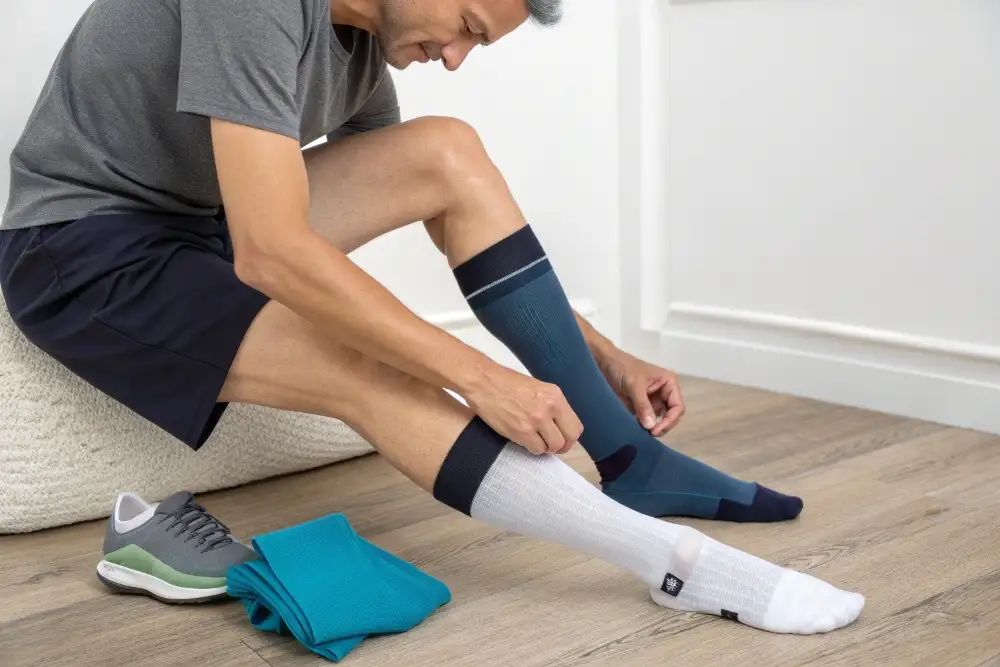
Here’s the deal. A healthcare professional may instruct a patient to wear compression stockings 24/7 for a period of time under specific circumstances.
These typically include:
- Post-Surgical Recovery: After major surgeries, particularly on the hips, knees, or abdomen, patients are often bedridden. This immobility dramatically increases the risk of a blood clot forming in the deep veins of the legs (DVT). To prevent this life-threatening condition, doctors prescribe special anti-embolism stockings to be worn continuously, day and night.
- Treatment for Venous Leg Ulcers: For patients with severe venous disease that has resulted in open sores or ulcers on the legs, a doctor might use a multi-layer compression bandaging system or specialized stockings that are worn around the clock to manage severe swelling and promote healing.
- Post-Sclerotherapy Care: After a procedure to treat varicose veins, wearing compression continuously for a few days (including at night) is often required to help seal the treated veins and ensure the procedure is successful.
The most important point for your brand is this: In every one of these cases, the use of nighttime compression is supervised by a doctor for a diagnosed medical reason. It involves a specific type of garment and a clear treatment plan.
How Do Prescription Anti-Embolism Stockings Differ from Regular Compression Socks?
This is a key distinction that can elevate your brand’s authority. Customers and even some retailers use terms like “compression socks” and “anti-embolism stockings” interchangeably, but they are not the same product. Understanding the difference is vital for providing safe advice. As a manufacturer, you can produce both, but they serve very different functions.
Anti-embolism stockings, often referred to by the brand name TED hose, are designed specifically for patients who are non-ambulatory (i.e., confined to a bed). Regular graduated compression socks are designed for people who are active and upright.
Here are the key differences:
- Compression Level: Anti-embolism stockings typically have a much lower compression level, often in the 8-18 mmHg range. This is just enough pressure to keep blood flowing in a stationary, horizontal person without being overly restrictive. Your standard over-the-counter compression socks often start at 15-20 mmHg and go up from there.
- Compression Gradient: While both are graduated, the pressure profile in an anti-embolism stocking is designed for a reclining body, whereas a standard compression sock’s gradient is optimized to fight gravity in a standing or sitting person.
- Intended User: The user of an anti-embolism stocking is bedridden. The user of a regular compression sock is mobile.
The takeaway for your business is this: Educate your B2B partners on this difference. If they serve clinics or hospitals, they need anti-embolism stockings. If they serve retail customers, athletes, and travelers, they need standard graduated compression socks. Advising a customer to sleep in a 20-30 mmHg athletic sock is not the same as a doctor prescribing an 18 mmHg anti-embolism stocking post-op.
What Key Features Define a High-Quality, Safe Compression Sock?
This conversation about safety is the perfect opportunity to guide your clients on what to look for when sourcing products. A high-quality sock is a safe sock. As a premium manufacturer, this is where you can showcase the value you provide beyond just production. You build better products so your clients can build a better, more trusted brand. The effectiveness and safety of a compression sock hinge on a few critical elements.
It’s all in the details. Here’s what separates a premium sock from a low-quality imitation:
- Accurate Sizing System: A sock’s fit is its most important feature. Sizing should never be based on shoe size alone. It requires precise measurements of the ankle and calf circumference to ensure the correct pressure is applied. A product that is “one size fits all” is a major red flag.
- True Graduated Compression: The compression must be tightest at the ankle and decrease uniformly up the leg. This can only be achieved with specialized machinery and quality control. At Max Hosiery, we use advanced testing devices to verify that every sock meets its stated mmHg rating.
- Seamless Construction: A poorly made sock will have a thick seam across the toes, which can cause rubbing, blisters, and irritation. A seamless toe closure is a mark of quality and ensures maximum comfort.
- Non-Slip, Non-Binding Top Band: The cuff of the sock needs to be strong enough to hold the sock in place without rolling down, but it must not be so tight that it digs into the skin or creates a tourniquet effect. This requires a carefully engineered knit.
How Do You Choose the Correct Compression Level (mmHg) for Your Needs?
Choosing the right compression level is just as important as getting the right size. It’s not a “more is better” situation. The appropriate level depends entirely on the user’s needs and intended application. Guiding your customers through this choice is a huge value-add.
Let’s break down the most common levels measured in millimeters of mercury (mmHg):
- 8-15 mmHg (Mild Compression): This level is perfect for beginners or for those who want a light, energizing feel for everyday wear. It’s great for combating minor leg fatigue without feeling overly restrictive.
- 15-20 mmHg (Moderate Compression): This is the most versatile and popular level. It’s the ideal choice for travel, long days of standing or sitting, and managing minor swelling or achiness. Most everyday wellness and travel socks fall into this category.
- 20-30 mmHg (Firm Compression): This is where we enter the territory of athletic recovery and medical support. This level is effective for managing varicose veins, moderate edema (swelling), and is a favorite among athletes for post-workout recovery to help reduce muscle soreness.
- 30-40 mmHg (Extra-Firm Compression): This is a medical-grade compression level and should generally only be used when recommended by a healthcare provider. It is prescribed for serious conditions like DVT, severe edema, and post-surgical recovery.
The bottom line is this: By creating clear product tiers based on these compression levels, you can help customers self-select the right product for their needs, ensuring they have a positive and effective experience.
What Materials Are Best for All-Day Comfort vs. Athletic Performance?
The material of a sock dramatically impacts its comfort, breathability, durability, and overall feel. A customer’s intended use should heavily influence the fabric blend. As a manufacturer, we can help you select the perfect blend to target specific customer segments, from the office worker to the marathon runner.
For Everyday and Office Wear
For a customer wearing socks for 8+ hours at a desk or for general wellness, comfort and breathability are the top priorities.
- Best Choices: Cotton and bamboo fiber are fantastic options. They are naturally soft, breathable, and gentle on the skin. Bamboo, in particular, has excellent moisture-wicking and temperature-regulating properties, making it a premium choice for all-day comfort. Merino wool is another great option for its softness and natural odor resistance.
For Athletic and Performance Use
Athletes need durability, moisture management, and unwavering support.
- Best Choices: Synthetic fibers like Nylon and Spandex (Lycra) are the gold standard here. They offer superior moisture-wicking to pull sweat away from the skin, are incredibly durable to withstand intense activity, and provide excellent elasticity to maintain consistent compression.
Here’s the deal. The material isn’t just a feature; it’s a core part of the product’s identity. A bamboo-blend sock can be marketed as a luxury wellness product, while a nylon-spandex sock is clearly positioned for athletic performance.
Are There Safe Alternatives for Achieving Leg Comfort at Night?
Your customers are looking for nighttime leg comfort. So, if standard compression socks are not the answer, what is? This is a fantastic opportunity for you to innovate and expand your product line. Instead of just saying “no,” you can say, “Don’t use that, use this instead.” This positions your brand as a complete-care solution provider.
There are several excellent alternatives you can offer:
- Pillow Elevation: The simplest solution is often the best. Elevating the legs on a pillow while sleeping uses gravity to your advantage, naturally helping to drain fluid and reduce swelling. It’s free, easy, and completely safe.
- Plush, Non-Binding Socks: For customers who want the warmth and cozy feeling of a sock, offer products without compression. Think of ultra-soft slipper socks made from chenille, fleece, or brushed acrylic. The goal here is warmth and comfort, not pressure.
- Gentle Stretching: A simple routine of gentle leg and ankle stretches before bed can help relax tired muscles and alleviate cramping. You could even create content (a blog post or video) demonstrating a few simple stretches.
The point is this: By acknowledging the customer’s underlying need for comfort and providing safe, effective alternatives, you build a deeper relationship based on trust and genuine care.
How Can Brands Innovate with Nighttime-Specific Legwear?
This is where you can truly get ahead of the competition. The market demand for nighttime comfort is clear. Instead of letting customers misuse daytime products, you can create a new category of legwear specifically designed for rest and relaxation. This is a blue-ocean opportunity for product development.
Let’s brainstorm. What would the ideal “sleep sock” look like?
- Develop a “Wellness Sock” Line: Create a sock with a very light, non-graduated compression or simply a supportive fit (well below 15 mmHg). The marketing would be crucial here—positioning it not as a compression sock, but as a “gentle, supportive hug” for tired legs overnight.
- Focus on Premium, Soothing Materials: As discussed, ultra-soft, breathable materials like bamboo, modal, or merino wool would be perfect. They provide comfort without trapping heat.
- Incorporate Infused Fabrics: Imagine a sock infused with micro-encapsulated moisturizers like shea butter or aloe vera to hydrate the skin overnight. Or consider calming scents like lavender to promote relaxation. This turns a simple sock into a piece of a nighttime wellness ritual.
As your manufacturing partner, Max Hosiery is ready to help you turn these ideas into reality. We can help you source these innovative yarns and design a product that is perfectly suited for the emerging market of nighttime leg care.
Conclusion: What Is the Best Way to Care for Compression Socks to Maintain Their Effectiveness?
Finally, a high-quality product deserves proper care. A compression sock’s lifespan and effectiveness depend entirely on preserving its elastic fibers. Providing clear care instructions is a simple but vital service for your customers, ensuring they get the most value out of their purchase.
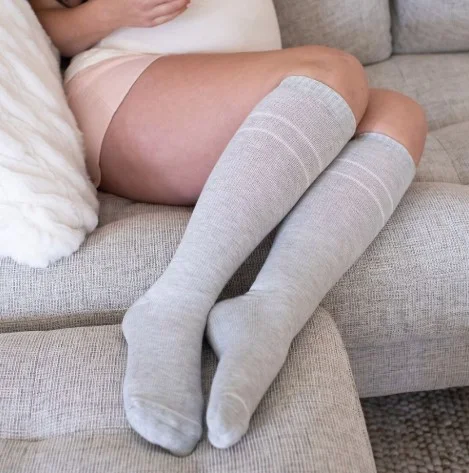
You wouldn’t put a cashmere sweater in a hot dryer, right? The same principle applies here. High heat is the enemy of elasticity.
Here are the simple steps to share with your customers:
- Wash After Each Wear: This removes skin oils and dirt that can break down the fibers.
- Use Cool Water and Mild Soap: Hand washing is best, but a gentle machine cycle is also acceptable. Avoid hot water, bleach, and fabric softeners, as they can degrade the elastic.
- Rinse Thoroughly: Leftover soap residue can also damage the fibers.
- Air Dry Only: This is the most critical step. Never put compression socks in a machine dryer. The intense heat will permanently destroy their compressive properties. Lay them flat or hang them to air dry away from direct heat or sunlight.
By teaching your customers proper care, you help them protect their investment and ensure your product performs as promised for its entire lifespan.
FAQ Section
So, to be clear, should I avoid wearing my 15-20 mmHg travel socks to bed?
Yes, that is the safest general advice. Compression levels like 15-20 mmHg are designed to work against gravity while you are upright or sitting. At night, when you are lying flat, this pressure is unnecessary and can potentially interfere with your natural circulation.
What’s the biggest mistake people make when choosing compression socks?
The most common mistake is choosing a size based on their shoe size instead of their actual leg measurements. An effective and safe fit depends on the circumference of your ankle and calf. The second biggest mistake is thinking that tighter is always better, instead of choosing the appropriate mmHg level for their specific needs.
My legs just feel achy at night. What’s a safe alternative to wearing my compression socks?
A great and simple alternative is to elevate your legs on a pillow while you sleep. This uses gravity to naturally help reduce any minor swelling or achiness. You could also try some gentle calf stretches before bed or wear a pair of soft, non-binding, non-compressive socks for warmth and comfort.
How often should I replace my compression socks?
With regular wear and proper care, a good quality pair of compression socks should be replaced every 3 to 6 months. Over time, the elastic fibers will naturally stretch and lose their compressive strength, making the socks less effective.
I see some socks marketed as “recovery socks” for athletes. Can those be worn to bed?
Most athletic recovery socks have a firm compression level (often 20-30 mmHg) and are intended to be worn for a few hours immediately after intense exercise to help reduce muscle soreness. While this is different from all-day wear, the general advice still stands: they are not designed for a full night of sleep, and it is best to take them off before bed.
